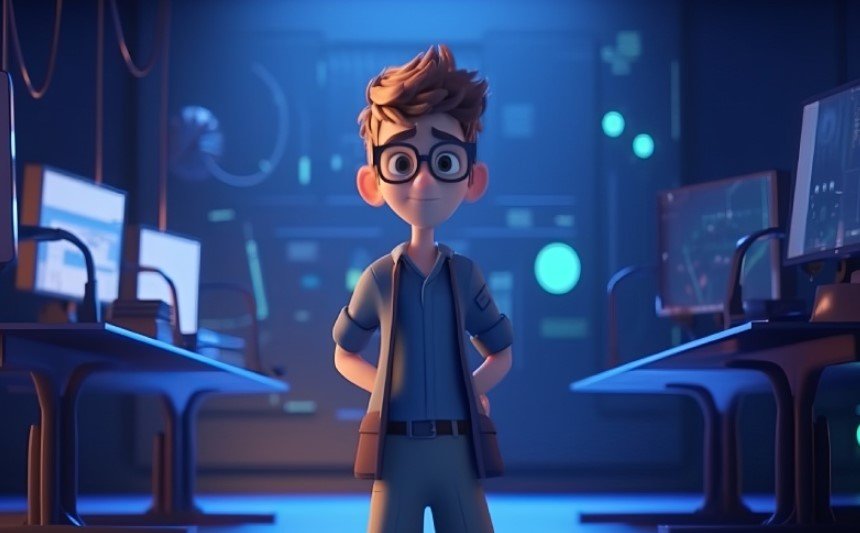Animation films have transcended age barriers, bringing stories to life through vibrant visuals and imaginative narratives. From classic fairy tales reimagined to original tales of adventure and friendship, these films captivate audiences and inspire creativity. Whether it’s the nostalgic charm of hand-drawn animation or the breathtaking realism of 3D graphics, the world of animation offers something for everyone. As technology evolves, so too does the ability of filmmakers to tell compelling stories that not only entertain but also resonate on a deeper level with viewers.
The Evolution of Animation
Animation has come a long way since its inception. Early forms relied heavily on frame-by-frame techniques, requiring artists to painstakingly create each image individually. However, with the development of computer-generated imagery (CGI), the animation industry experienced a revolution. Today’s films leverage advanced technology to produce stunning visuals that were once thought impossible. This has opened the door for new storytelling techniques and artistic styles, enabling filmmakers to push the boundaries of their creativity.
Classic vs. Modern Animation
While modern animation often dazzles with its high-definition graphics and intricate details, classic animated films hold a special place in the hearts of many. Characters like Mickey Mouse and Bugs Bunny paved the way for animated storytelling, setting precedents that still influence creators today. Disney’s early works, such as “Snow White and the Seven Dwarfs,” showcased the magic of animation, introducing audiences to memorable characters and musical storytelling.
In contrast, contemporary animation films, such as “Toy Story” and “Frozen,” incorporate sophisticated narrative structures and diverse character arcs that reflect the complexities of modern life. These films not only entertain but also deliver powerful messages about friendship, perseverance, and self-discovery.
The Art of Storytelling in Animation
Animation is a unique medium that seamlessly blends visual artistry with storytelling. It allows for limitless creativity, where artists can create entire worlds, transformative characters, and fantastical situations that traditional live-action films might struggle to portray. This ability to craft immersive narratives is what draws audiences and keeps them engaged.
One of the strengths of animated films is their capacity to convey deep emotions. The use of colour, movement, and sound in animation can evoke feelings ranging from joy to sadness, often in a matter of seconds. For instance, the heart-wrenching scenes in films like “Up” demonstrate how animation can tackle profound themes such as loss, love, and longing in a visually captivating manner.
The Role of Music in Animation
Music plays a vital role in enhancing the storytelling experience in animated films. Iconic soundtracks and songs have become synonymous with many beloved animated movies, enriching the narrative and creating memorable moments. Composers like Alan Menken, Hans Zimmer, and Joe Hisaishi have contributed to the success of numerous animation films, producing scores that resonate with audiences long after the credits roll.
Songs within these films often serve as emotional anchors, helping to communicate a character’s feelings or transform key moments into unforgettable experiences. Whether it’s the empowering anthem of “Let It Go” in “Frozen” or the whimsical tunes of “The Lion King,” music elevates the overall impact of the story being told.
The Influence of Animation on Culture
Animation films have a profound impact on culture, shaping perceptions and influencing ideas across generations. They introduce new concepts, challenge societal norms, and even address important issues, from environmental concerns to diversity and inclusion. For example, films like “Zootopia” tackle themes of prejudice and acceptance, encouraging audiences to reflect on their beliefs and attitudes.
Moreover, animated films often serve as a springboard for discussions about identity, morality, and community. Characters that audiences connect with can inspire empathy and understanding, making animation a powerful tool for social change. As more diverse voices enter the animation industry, stories that reflect a broader range of experiences are increasingly being told, providing representation and inspiring future generations.
The Future of Animation
As technology continues to advance, the potential for animation is limitless. Emerging trends such as virtual reality (VR) and augmented reality (AR) are starting to influence the way stories are told, allowing for immersive experiences that engage audiences in new ways. Animators are also exploring new styles, blending different artistic approaches to create unique visuals that enhance storytelling.
The future of animation is not only about stunning visuals but also about creating narratives that resonate with a global audience. As we move forward, it’s likely that we will see even more innovative techniques and collaborative projects that redefine what animation can achieve.
Conclusion
Animation is an ever-evolving art form that continues to captivate audiences worldwide. From classic hand-drawn animation to cutting-edge CGI, the world of animation offers endless possibilities for creative storytelling. By pushing boundaries and addressing important themes, animated films have a lasting impact on culture and society. With technology advancing at a rapid pace, the future of animation looks brighter than ever, promising even more exciting and inspiring stories yet to come. So whether you’re a fan of traditional fairy tales or modern adventures, there’s no doubt that animation will continue to capture our hearts and imaginations for years to come.
